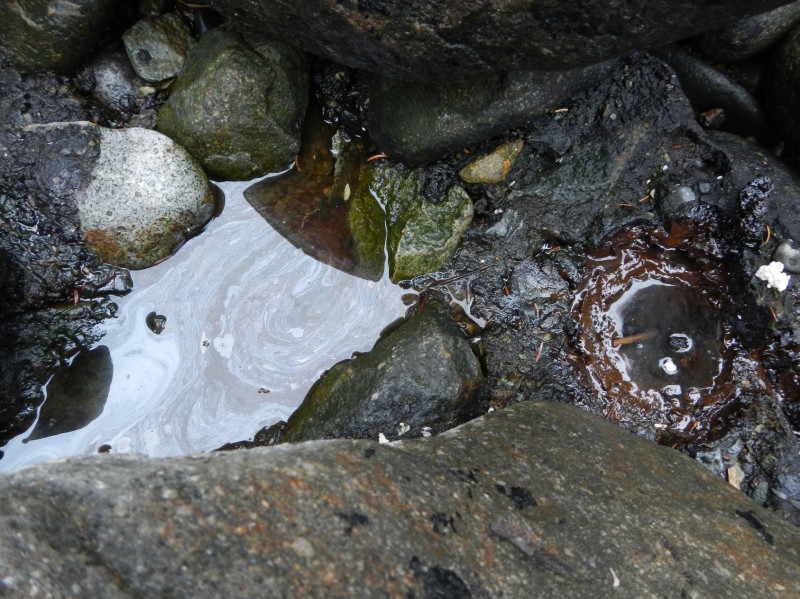http://oceanleadership.org/still-fresh-remnants-exxon-valdez-oil-25-years-oil-spill-found-protected-boulders/
Posted on Thursday, February 27th, 2014 at 1:52 pm
Twenty-five years after the infamous Exxon Valdez oil spill in Prince William Sound, beaches on the Alaska Peninsula hundreds of kilometers from the incident still harbor small hidden pockets of surprisingly unchanged oil, according to new research being presented here today.

Oil trapped between rocks on a beach in the Gulf of Alaska. New research being presented at the Ocean Sciences Meeting finds that beaches on the Alaska Peninsula hundreds of kilometers from the site of the 1989 Exxon Valdez oil spill still harbor small hidden pockets of oil. (Credit: Gail Irvine, USGS)
(From ScienceDaily) – The focus of the study is to learn how oil persists long after a spill. Researchers presenting the work caution that the amount of oil being studied is a trace of what was originally spilled and that results from these sites cannot be simply extrapolated to the entire spill area.
The rocky, high-energy coastlines in the Shelikof Strait, southwest of the spill, contain small remnants of the spill which appear to be protected by a stable boulder and cobble “armor,” says Gail Irvine of the U.S. Geological Survey’s Alaska Science Center.
“To have oil there after 23 years is remarkable,” said Irvine. “We have these marked boulders whose movement we’ve been studying for more than 18 years. The oil itself has hardly weathered and is similar to 11-day-old oil.”
The oil was positively identified as that from the Exxon Valdez by chemists at the National Oceanic and Atmospheric Administration’s Auke Bay Laboratory and in Christopher Reddy’s lab at Woods Hole Oceanographic Institution, which specializes in investigating oil spills of all kinds – particularly those which are decades old.
“Very old oil spills can be found to still have oil,” said Reddy. “We were capable of fingerprinting that oil.”
The new findings from this study – about where oil can persist and which chemical compounds in the oil are more and less durable – offer some “silver linings” to the disastrous spill, said Reddy. The researchers are presenting the new research today at the 2014 Ocean Sciences Meeting co-sponsored by the Association for the Sciences of Limnology and Oceanography, The Oceanography Society and the American Geophysical Union.
“One lesson is that if you are responsible for cleaning up a spill, you want to be proactive about cleanup behind the boulders,” said Reddy. Another is that response efforts should try to prevent oil from stranding in these areas where oil may persist for years or decades.
“We are taking advantage of these samples as a natural laboratory,” he said.
[Image]
Special thanks to Richard Charter